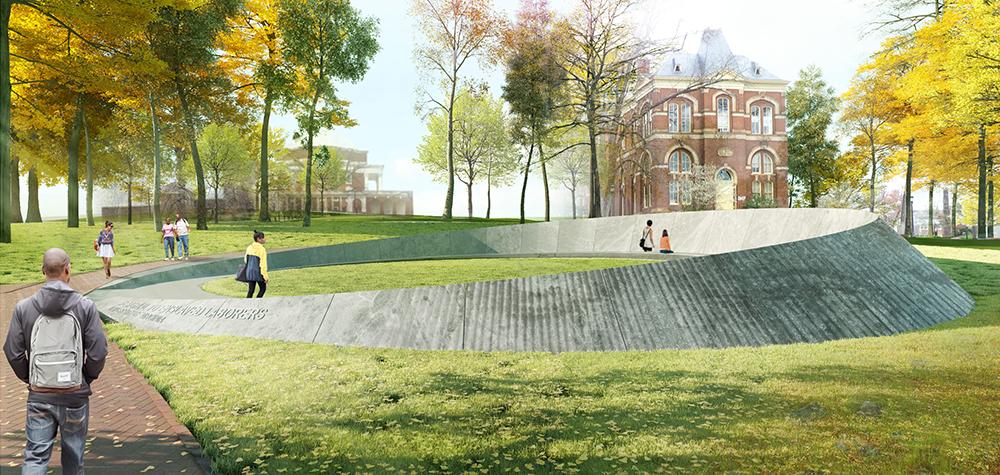The world’s largest architecture and design film festival is returning to the National Building Museum in Washington D.C.
The Architecture & Design Film Festival will be held there from March 24-26, and will include 12 feature-length films and a selection of short films from around the world.
Opening night festivities include a reception in the museum’s Great Hall and an in-person Q+A with Chicago-based graphic design visionary Bruce Mau, following a screening of the namesake film “Mau.”
The film explores the designer’s creative journey and optimistic push to tackle the world’s biggest problems with design. Over the span of his career, Mau has evolved from graphic designer to advising global brands like Coca-Cola and Disney — and rethinking a 1,000-year plan for Islam’s holiest site.
“Bruce Mau is a global thinker – he’s helping Mecca rethink human traffic and the flow of people come in for the Hajj,” says Kyle Bergman, the festival’s founder and director.
The festival is now in its 14th year, and is back for its fourth at the National Building Museum. Bergman says he began to think about film back in 2000. “Then “My Architect” came out and we got to see all this work about Lou Kahn, and the human element of a son looking for his father,” he says.
It was an inspiration. Now festival organizers screen 350 films a year before choosing 15 to 20. “We select films on anything about the creative process, including architects, landscape architects, graphic and product designers, and that are well-told stories – both human and design, for a balance of both,” he says. “There’s a sweet spot in there.”
Issues covered in the films depend on what filmmakers submit. But usually it means films on architecture, landscape architecture, graphic design, product design and interior design. “And there are preservation issues, like this year’s “Battleship Berlin,” about a building that looks like a battleship – and the question is whether it should it be preserved or not,” he says.
The films are aimed at design professionals and design consumers – and at bringing the two groups together. ‘We talk to ourselves all the time but we’re not so good with a larger audience,” the architect says. “We hope to engage people to make better design whether they’re owners, clients, makers or users.”
The big idea? To create a new dialog about architecture and design. “We hope to get more people to understand the value of it, and to get excited about new ways of thinking about it,” he says.
Film can tell stories about creative efforts in the world also – of making things, putting things together, trial- and-error and thinking big. And that’s part of the festival’s mission. “It’s for people who think about design, and those who don’t, to think about how important it is and how it can change things,” he says. “We want them to understand that design can make the world a better place.”
Over the course of the year and all events, more than 25,000 people will see the festival’s films in person. It went online during the pandemic, and attracted about the same number. “Going forward, we’ll do it in person – and then online for anyone in the U.S. and Canada,” he says.
But first, there’s this showing at the National Building Museum in D.C.
For more, go here.
[slideshow id=2418]


